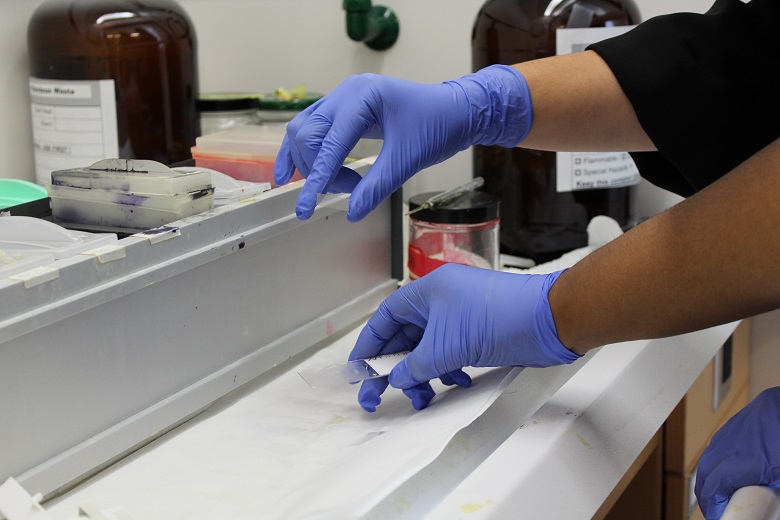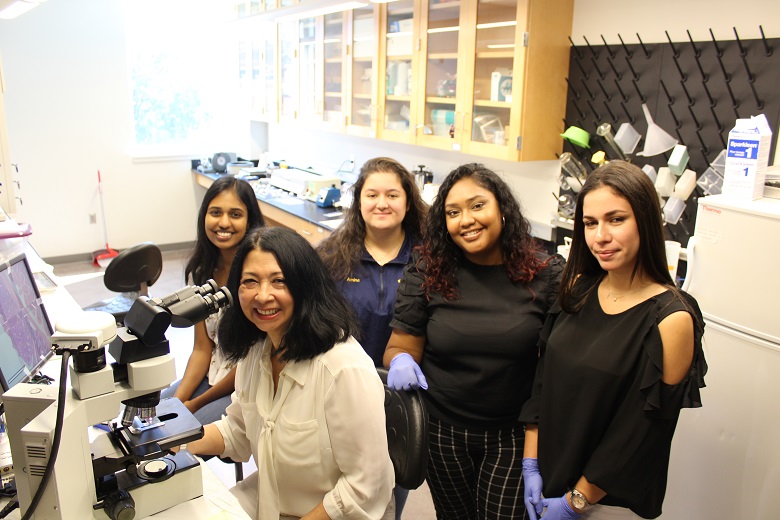What’s it like working in a biology research lab? News@Wilkes shadowed Linda Gutierrez, associate professor of biology, and her team of students for a new feature called “In the Lab.”
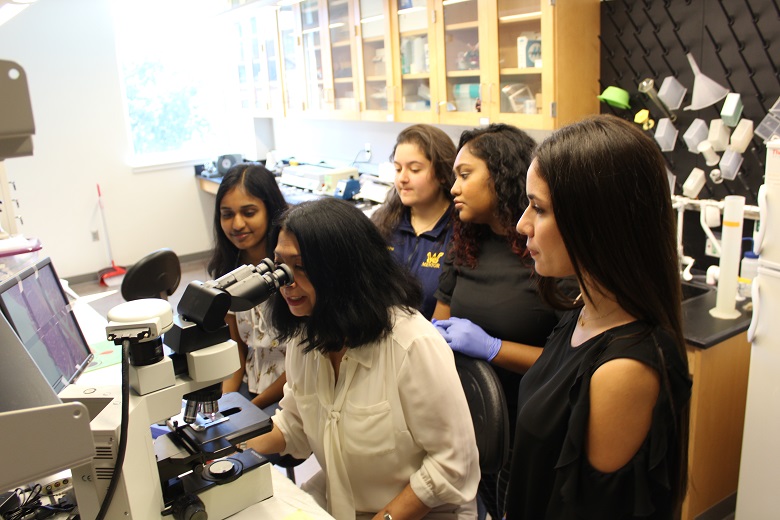
Inside room 324 of the Cohen Science Center, Associate Professor of Biology Linda Gutierrez and her team of student researchers review their tasks for the day. The team of five includes senior Maria Dima, sophomore Priscilla Thomas, senior Amina Mustafa, senior Shaelyn Briggs and sophomore Wesley Mahler. Though all are at different points in their academic careers, each student brings knowledge and skills gained in the classroom knowledge to the lab.
The team is continuing research Gutierrez began in 2017. The group is analyzing adipose tissues found in the vicinity of intestinal tumors to gain insights about the impact of obesity on the development of cancer. This research is particularly important because there is no cure for premalignant diseases such as ulcerative colitis and Crohn’s disease and colorectal cancer at this time. By studying the crosstalk between adipose tissues and tumors, the team hopes to contribute to a better understanding of the carcinogenesis process and find a cure for these conditions.
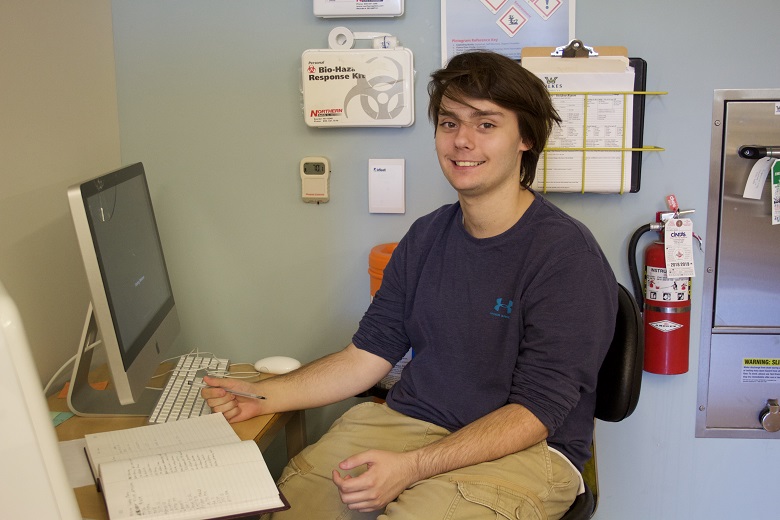
Wesley Mahler
The setup of this lab is very community based, the team explains. The lab is shared: to the left a team of students is studying fruit flies under the direction of Lisa Kadlec, associate professor of biology. The right is the domain of “Dr. G’s” team. Gutierrez keeps things very relaxed and accessible, ensuring her students get the best experience of hands-on research without neglecting their classes. Her students agree that this has made working in her lab a positive and informative experience. “Working with Dr. G is amazing,” Mustafa says. “She’s so knowledgeable and pushes us to be our best in and out the lab. She truly cares about her students and always checks in on us. She does everything she can to help us understand the material by sending up supplemental materials, meeting with us to answer any questions we have, and help us make the connections with what we learn in our classes to what we do in lab.”
What is a typical day in in the Gutierrez lab?
It’s hard to define a typical day in Gutierrez’s lab. Earlier research teams worked with transgenic mice to study the early stages of colorectal cancer. Part of their responsibilities was being the caretaker for the experimental mice – both a fun way to be involved as well as valuable skill to have acquired when students are looking for opportunities in professional lab settings after graduating.
The current student research team can be found analyzing the collected cells and tissues under the microscope, performing and analyzing routine histological procedures and immunohistochemistry to detect specific proteins and cancer markers. They also record their data and prepare to publish new updates in journals, something Gutierrez thinks is critical to the experience. A rule in her lab: always eat before you come to work. “I don’t want them hungry and tired,” she says laughing.
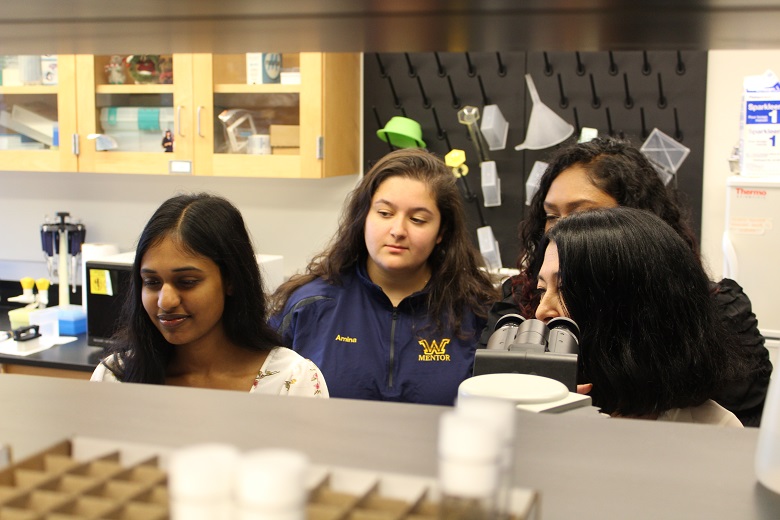
How many days and hours are spent in the lab?
Each semester, the amount of time spent in the lab varies based on Gutierrez’s teaching schedule and her students’ class schedules. During the fall, members of the research team can be found in the lab on Tuesdays and Thursdays from 11 a.m. to 1 p.m. But even when the students aren’t in the lab, they can still complete work. In fact, Dima, Mustafa and Briggs are using this lab experience as their senior research project. At the end of the academic year, the students will present their findings as part of their graduation requirements.
Tools of the trade:
- Experimental mice
- Tissue processor
- Microtome: A tool used to cut extremely thin slices of material, known as sections
- Slides and battery of stains
- Sterile Hood
- Dyes and antibodies
- Microscopes
- Computers
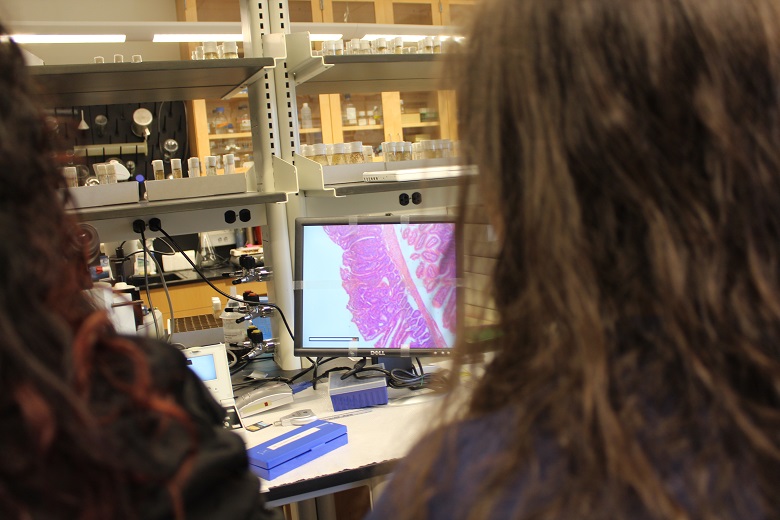
How is this preparing students for the future?
“Having research experience as an undergrad is essential for anyone who wants to go into any science career in the future,” Briggs explains. “This really would distinguish you apart from other candidates if applying to higher level schools, for instance like grad school or any type of professional program. Also, most of research at Wilkes is hands-on, which is really great because you learn different techniques that might be needed when working in a lab setting.”
